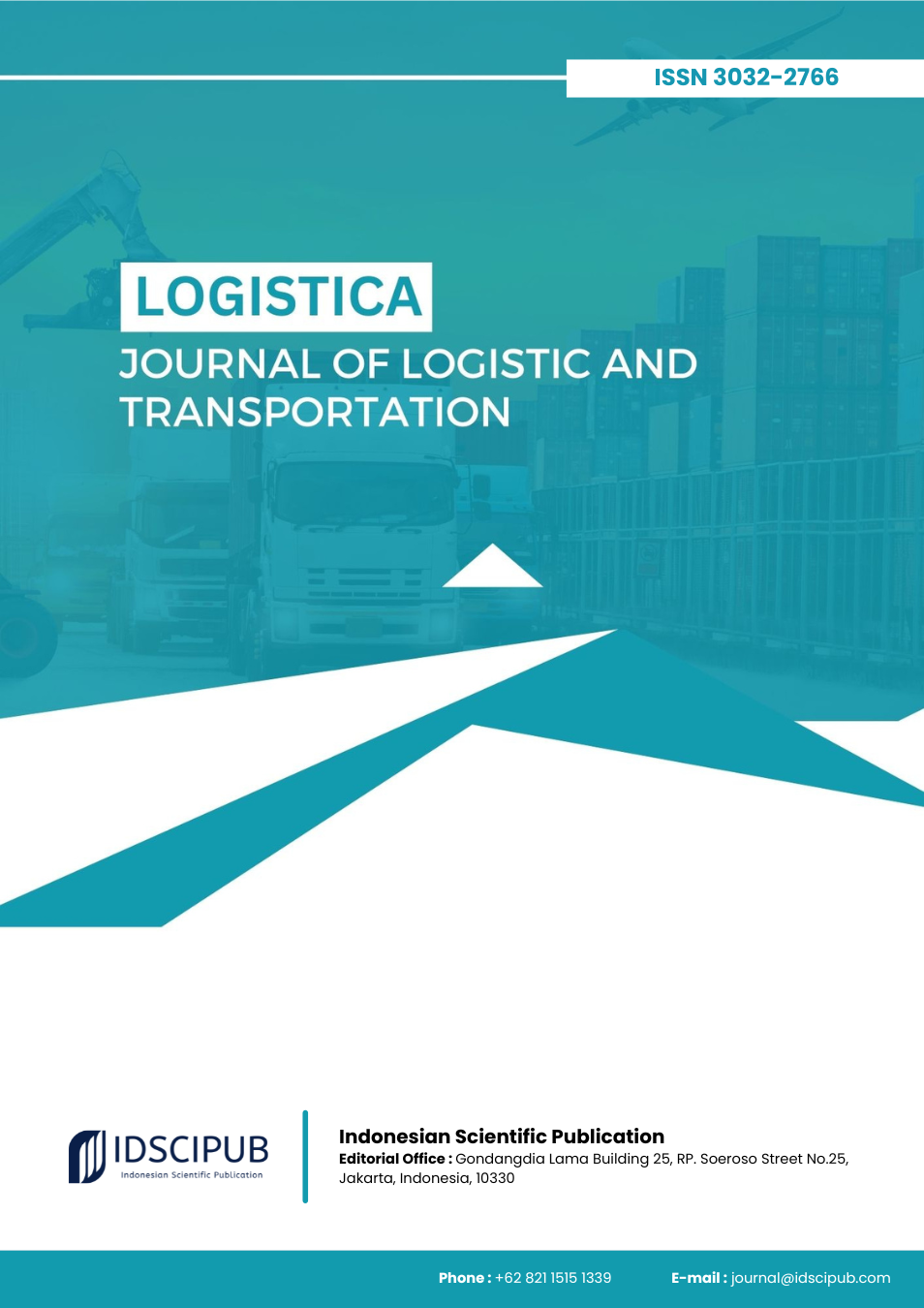Bridging Gaps in Transport Demand Forecasting through Artificial Intelligence and Machine Learning
DOI:
https://doi.org/10.61978/logistica.v2i4.1065Keywords:
Artificial Intelligence, Transport Demand Forecasting, Machine Learning, Urban Mobility, Spatio-temporal Data, Sustainable Transportation, Deep LearningAbstract
Artificial Intelligence (AI) has emerged as a transformative tool for transportation demand forecasting, addressing the limitations of traditional statistical approaches. This study systematically reviews recent literature to evaluate AI methodologies, their applications, and the systemic factors that shape adoption. Peer-reviewed studies published between 2018 and 2025 were identified from Scopus, Web of Science, and Google Scholar. Findings reveal that AI techniques, particularly deep learning and ensemble models, consistently outperform conventional forecasting methods in predictive accuracy and adaptability. Integration of spatio-temporal and geospatial data further enhances model robustness, supporting more responsive strategies for sustainable urban mobility. Applications span passenger transport, freight logistics, public transit optimization, and electric vehicle charging demand. Nonetheless, challenges persist, including data scarcity, computational demands, interpretability concerns, and uneven adoption between developed and developing regions. The review underscores the need for supportive policies, collaborative data management, and fairness-aware models. Overall, leveraging AI in transport forecasting is essential to build efficient, adaptive, and inclusive mobility systems while aligning future research with long-term planning and sustainability goals.
References
Alex, A., Manju, V., & Isaac, K. (2019). Modelling of travel behaviour of students using artificial intelligence. Archives of Transport, 51(3), 7–19. https://doi.org/10.5604/01.3001.0013.6159 DOI: https://doi.org/10.5604/01.3001.0013.6159
Alzahrani, M., Wang, Q., Liao, W., Chen, X., & Yu, W. (2024). Survey on multi-task learning in smart transportation. IEEE Access, 12, 17023–17044. https://doi.org/10.1109/access.2024.3355034 DOI: https://doi.org/10.1109/ACCESS.2024.3355034
Bansal, K., Anjimoon, S., Revathi, V., Gupta, M., & Sharma, A. (2024). The evolution from digital production to digital society in industry 4.0 towards industry 5.0., 27–42. https://doi.org/10.4018/979-8-3693-3550-5.ch003 DOI: https://doi.org/10.4018/979-8-3693-3550-5.ch003
Çolak, M., & Bayrak, O. (2025). Predictive modeling of urban travel demand using neural networks and regression analysis. Urban Science, 9(6), 195. https://doi.org/10.3390/urbansci9060195 DOI: https://doi.org/10.3390/urbansci9060195
Daios, A., Kladovasilakis, N., Kelemis, A., & Kostavelis, I. (2025). AI applications in supply chain management: A survey. Applied Sciences, 15(5), 2775. https://doi.org/10.3390/app15052775 DOI: https://doi.org/10.3390/app15052775
Khairi, S., Abbas, A., Sharif, M., & Apeagyei, A. (2023). Artificial intelligence applications in road traffic forecasting: A review of current research., 38–43. https://doi.org/10.1109/3ict60104.2023.10391677 DOI: https://doi.org/10.1109/3ICT60104.2023.10391677
Kondratenko, I., Sulimin, V., & Shvedov, V. (2023). Research of the use of digital technologies in the logistics of the poultry subcomplex. Bio Web of Conferences, 67, 02030. https://doi.org/10.1051/bioconf/20236702030 DOI: https://doi.org/10.1051/bioconf/20236702030
Liu, H., Qi-yu, W., Zhuang, F., Lu, X., Dou, D., & Xiong, H. (2021). Community-aware multi-task transportation demand prediction. Proceedings of the AAAI Conference on Artificial Intelligence, 35(1), 320–327. https://doi.org/10.1609/aaai.v35i1.16107 DOI: https://doi.org/10.1609/aaai.v35i1.16107
Nguyên, H., Kieu, M., Wen, T., & Cai, C. (2018). Deep learning methods in transportation domain: A review. IET Intelligent Transport Systems, 12(9), 998–1004. https://doi.org/10.1049/iet-its.2018.0064 DOI: https://doi.org/10.1049/iet-its.2018.0064
Regal, A., Sánchez-Díaz, I., & Kalahasthi, L. (2022). Using machine learning to predict freight vehicles’ demand for loading zones in urban environments. Transportation Research Record: Journal of the Transportation Research Board, 2677(1), 829–842. https://doi.org/10.1177/03611981221101893 DOI: https://doi.org/10.1177/03611981221101893
Spanos, G., Lalas, A., Votis, K., & Tzovaras, D. (2025). Principal component random forest for passenger demand forecasting in cooperative, connected, and automated mobility. Sustainability, 17(6), 2632. https://doi.org/10.3390/su17062632 DOI: https://doi.org/10.3390/su17062632
Sun, Y., Dong, Y., Waygood, E., Naseri, H., Jiang, Y., & Chen, Y. (2022). Machine-learning approaches to identify travel modes using smartphone-assisted survey and map application programming interface. Transportation Research Record: Journal of the Transportation Research Board, 2677(2), 385–400. https://doi.org/10.1177/03611981221106483 DOI: https://doi.org/10.1177/03611981221106483
Zambang, M., Jiang, H., & Wahab, L. (2021). Modeling vehicle ownership with machine learning techniques in the Greater Tamale Area, Ghana. PLOS ONE, 16(2), e0246044. https://doi.org/10.1371/journal.pone.0246044 DOI: https://doi.org/10.1371/journal.pone.0246044




